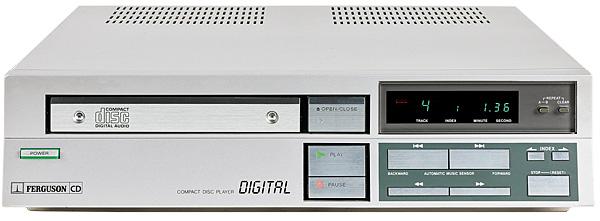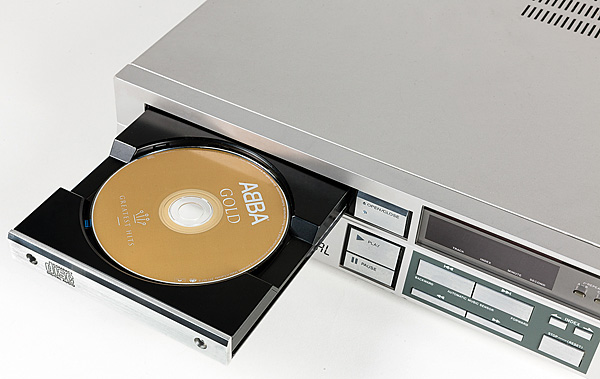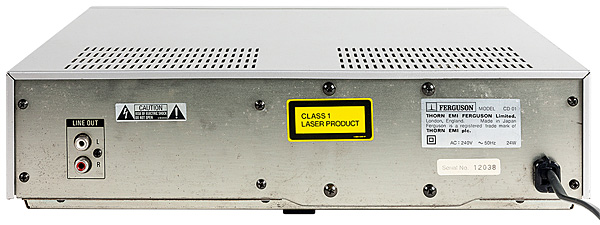Ferguson CD 01 CD Player

 Now a forgotten hero, this CD player's claim to fame was that it was the first to be sold by a British household name. But does its sound make it more than just a curio?
Now a forgotten hero, this CD player's claim to fame was that it was the first to be sold by a British household name. But does its sound make it more than just a curio?
Ferguson isn't a name often seen in the pages of HFN, but from the early 1950s to the late 1980s it was a dominant player in the UK consumer electronics marketplace. Part of the Thorn group, the brand was never positioned as a specialist hi-fi manufacturer but its audio division was prolific.
It mainly sold combination units under its own name, as well as those of HMV (upmarket), Ultra (modernist styling) and Goodmans (supporting the loudspeaker ranges). Quick to embrace emerging technologies, such as solid-state circuitry, Teletext and video recording, it was only natural that Thorn would seek to provide a Compact Disc player for its dealers to sell. This appeared early in 1984 as the Ferguson CD 01 and was the first CD player to be sold by a British household name.

Step Too Far
In the early days, producing a CD player from scratch was a task beyond all but Philips and the powerful Japanese majors. For the rest, rebranding or reworking an existing machine was the only option. Many European brands gravitated towards Philips, but Ferguson and the Dutch multinational had become big rivals as the CD era dawned. It may have been considered a step too far to buy-in complete CD players from such a key competitor. JVC would have been the other obvious choice as its Japanese factories had been supplying Thorn with VHS video recorders, packaged in Ferguson's own distinctive cabinet styling, since the late '70s. Ferguson had planned to take JVC's VHD (Video High Density) disc as well, along with its high quality audio offshoot AHD. Money was invested in a UK plant to make the discs and fully engineered prototype players in Ferguson livery were produced. But Thorn abandoned the entire scheme when it became clear that the public wanted home-recordable video tapes rather than pre-recorded discs.
Rising Son
The distraction of VHD had left JVC behind in the race to produce CD players, meaning its debut XL-V1 machine was nothing more than a re-badged Hitachi DA-1000 [HFN Sep '16]. In the end, the CD 01 was made for Ferguson by a company that rarely produces anything for sale outside its own empire: Sony.

Sony's debut CDP-101 [HFN Jan '12] had certainly been a good seller, but like many first generation CD players it was complicated and expensive to produce. Now that the technology had been proved to work, what was needed were simpler, cheaper machines to boost disc sales and help to establish the format.
Farewell Fripperies
So it was that Sony decided to take the basic elements of the CDP-101 (laser, spindle motor and chipset) and package them in a rationalised layout. The resulting CDP-11S was in many ways what the CDP-101 should have been – simple, logical and more cost-effective to make. It was this machine, in almost unmodified form, that would become Ferguson's CD 01.
Sony hardly promoted the CDP-11S under its own name in the UK, preferring to concentrate on the upper end of the market with its CDP-102 and CDP-103 models, along with exotic miniatures such as the D-50 portable [HFN Jan '13].

Although broadly similar in appearance, the Sony CDP-101 and CDP-11S/Ferguson CD 01 differed considerably in detail. The transformation had stripped the '101 of many of its fripperies, such as the seldom-used accessory connector, the function buzzer and its attendant 'beep' switch, the timer start function, the switchable 'anti shock' facility and, in the case of the Ferguson version, the headphone socket. The infra-red remote control system was also abandoned, along with the CDP-101's touch-sensitive control keys. Normal 'tactile' buttons were now the order of the day – an ergonomic improvement. A few niceties were also culled, like the gold-plated RCA connectors and oxygen-free copper mains cable that all CDP-101s had.
Inside, the mains transformer and the heatsink for the voltage regulators were both now contained within the cabinet while the loading mechanism was simplified. The latter still needed two motors (one for the slide and one for the disc clamp), but the removal of the 'open' key from the drawer front did at least result in simpler wiring. The single 16-bit DAC and its attendant analogue sample-and-hold and high-order filter circuits remained, but the two power driver chips for the tracking, focus and loading functions were condensed into one, saving a little space and cost.
Instantly Familiar
Like the CDP-101, the Ferguson CD 01 demonstrated a mastery of CD player ergonomics while machines from rivals were still at an experimental stage. Even today its controls are instantly familiar and easy to operate. However, there are a few minor details to confuse the unwary, which combine to betray the age of the design.
The slow-acting disc loading tray is one example – there is a noticeable delay between pressing the open key and anything actually happening. The display shows a single '0' when the player is switched on and this remains even after a disc has been loaded, making one think that nothing has been read. Only a tiny red 'disc' legend shows when this is not the case and if the disc cannot be read (if it is scratched or has been loaded upside down, for instance) it is automatically ejected.



















































